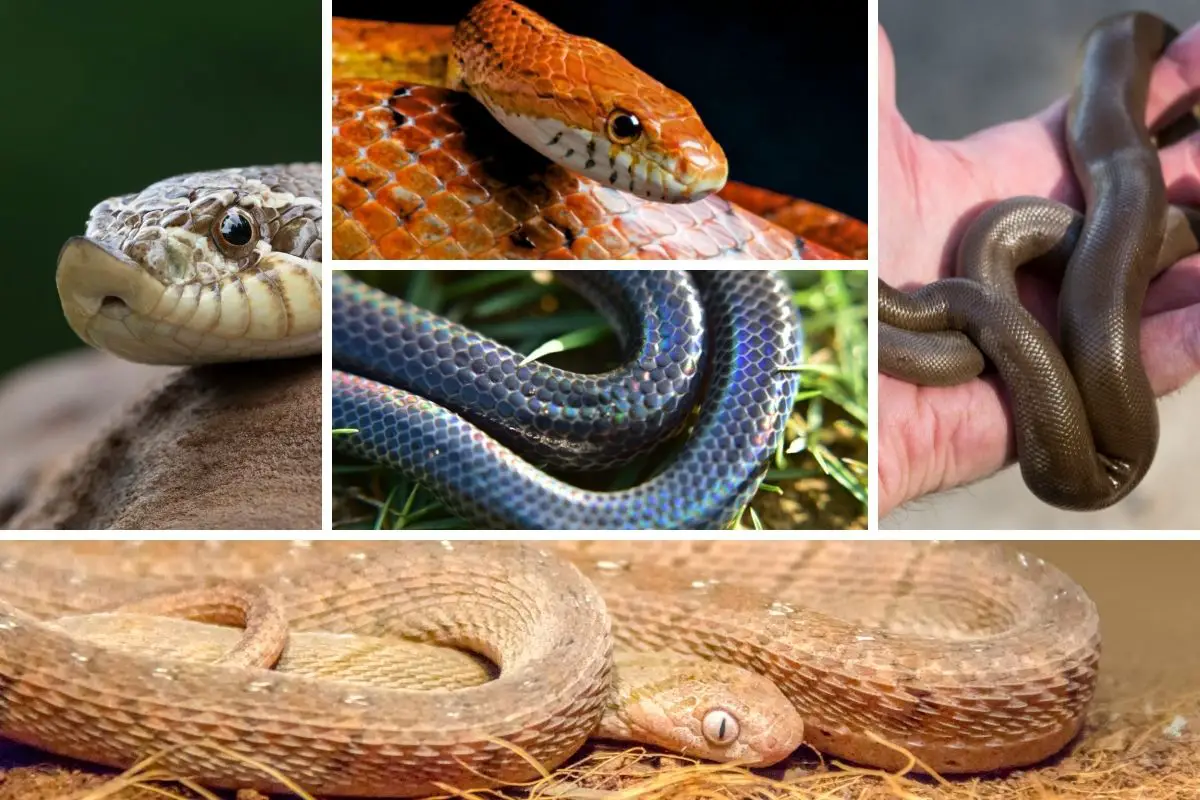Snakes can be a great pet, and in fact, many people choose them over other pets because they are low-maintenance. Snakes don’t bark, meow, or need to go outside for walks.
There is one downside though: snakes do bite! But this shouldn’t be the reason why you don’t get a pet snake, all animals have defense mechanisms, it just happens that snakes’ defense mechanism is to strike and bite.
However, there are some snakes that are much less likely to bite than others, and in this article, we are going to take a look at these ones.
Let’s start with the list;
Here are the 12 pet snakes that don’t bite:
- Corn Snake
- Rosy Boa
- Western Hognose Snake
- Ball Python
- Sunbeam snake
- Rubber Boas
- Kenyan Sand boa
- California King Snake
- Ringneck Snake
- Cape House Snake
- African Egg-Eating Snake
- Milk Snake
In this article, we are going to discuss why each of these snakes is unique in its own way and help you learn a bit more about them in the simplest way that can help you make a decision.
We’re also going to discuss what you should do if your pet snake does bite you, so make sure to read to the end… okay let’s goooo…
Contents
The 12 Pet Snakes that Don’t Bite
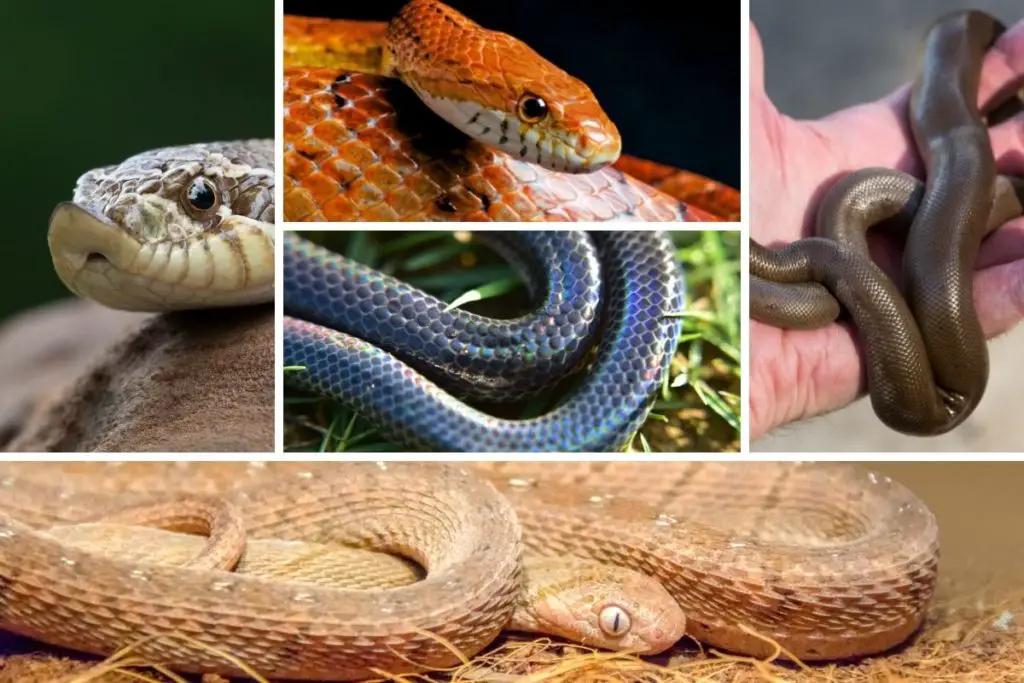
Before you start reading about these snakes, you really should know that whether or not they bite should not be the only decision-making factor you consider.
The price of the snake, how easy they are to care for, and how friendly they are all things you should consider as well. You don’t want to get a snake that is almost perfect only to discover that the special diet they need is going to cost you a fortune, it’s just not going to be a good experience.
If what you are looking for are snakes that are good for beginners, that’s great, but you can also check out these snakes that will stay small and take size into consideration, as an example.
Okay, now let’s discuss these snakes that are the least likely to bite you and their basic info.
Corn Snake
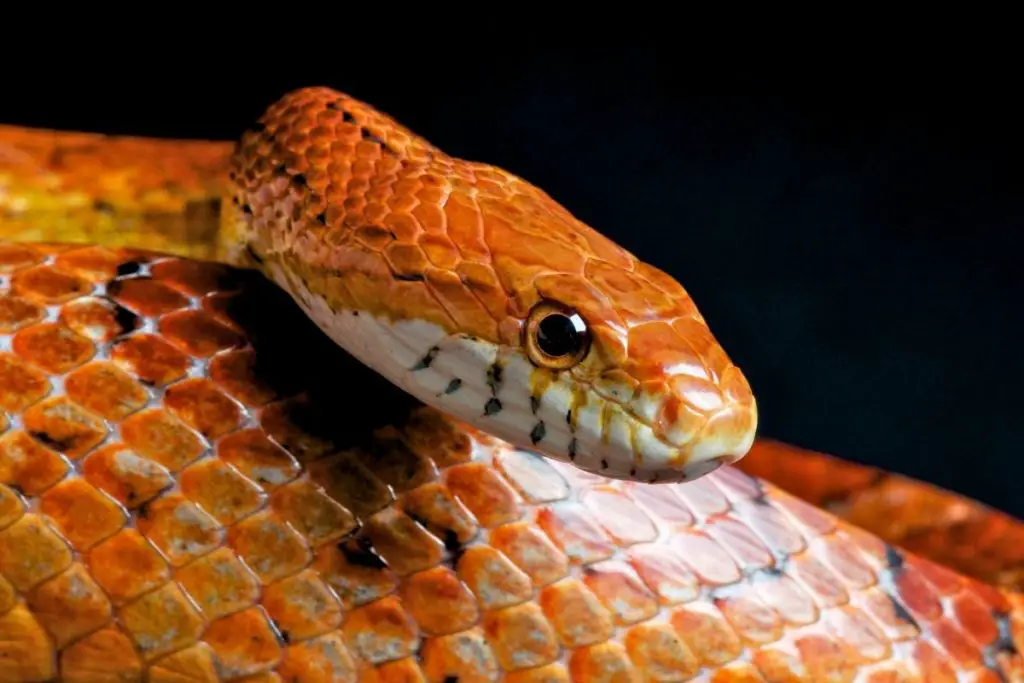
Lifespan: up to 8 years
Size: Up to five feet
Price: $80
The Corn snake is a great starter pet for anyone interested in snakes. They come in a variety of colors and are docile by nature, making them unlikely to bite.
They do best when kept at temperatures between 70-80 degrees Fahrenheit and should be fed every week or two. Snacks like mice or baby chicks can be offered to them, but they should, of course, be frozen and not alive, you can learn why you should never feed your pet snake wild mice here.
Rosy Boa

Lifespan: Up to 30 years
Size: Up to 3.6 feet long
Price $20
The Rosy boa is a small, non-venomous snake that can be found in the deserts of the southwestern United States. They are typically shy and will try to avoid confrontation, making them one of the least likely snakes to bite you.
They should be kept at room temperature and fed every two to three weeks.
Snakes of this sort are ambush hunters. They enjoy burrowing in the sand and waiting for their meal to pass by.
As a result, it’s best not to interrupt your pet while it is in its hunting mode since it will attempt to bite you as soon as you stimulate its feeding response.
Other than that, Rosy boas are one of the least likely snakes to bite their owners and most owners will not get bitten throughout their entire snake’s life.
Western Hognose Snake
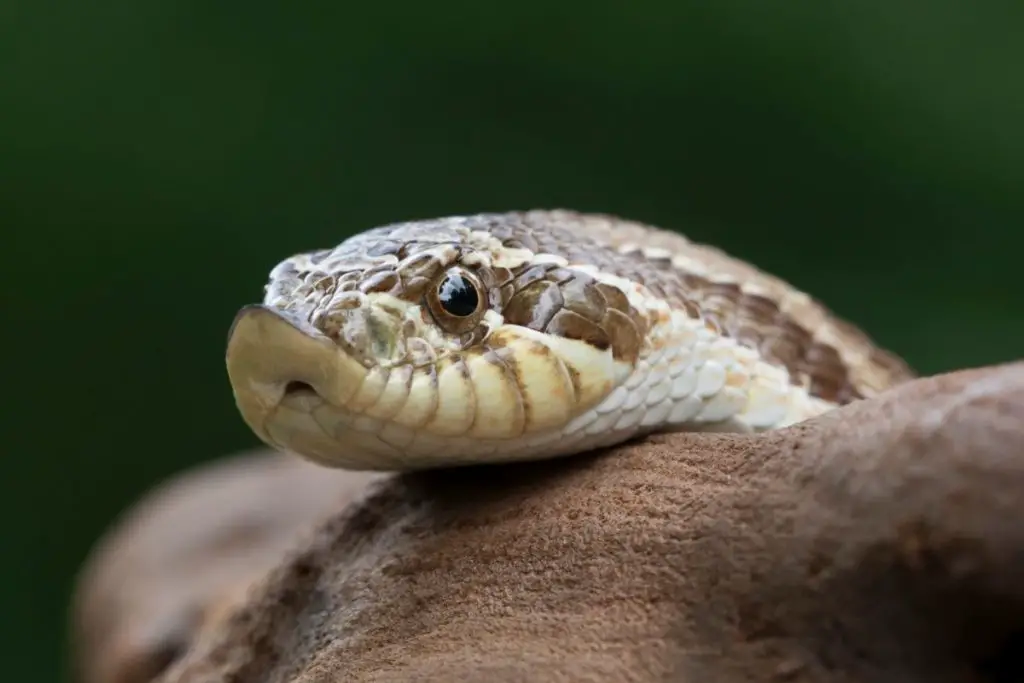
Lifespan: up to 20 years
Size: up to 3.6 feet.
Price: $250
The Western hognose get their name from their upturned snout, which they use to dig up prey from under the ground.
The western hognose snake is, in fact, poisonous. While there is no cause for alarm since the venom is only utilized by their prey animals and not people, they are still technically venomous.
They are unlikely to bite, but if they ever do, you will only get a little swelling at the absolute worst as a result of their bite.
This snake is also known for being very docile and will try to avoid confrontation at all costs. It is one of the few snakes that will almost never bite its owners and it’s a great snake for beginners.
They should be kept at room temperature and fed every two to three weeks. Snacks like mice or baby chicks can be offered to them, but they should, of course, be frozen and not alive. You can learn why
Ball Python
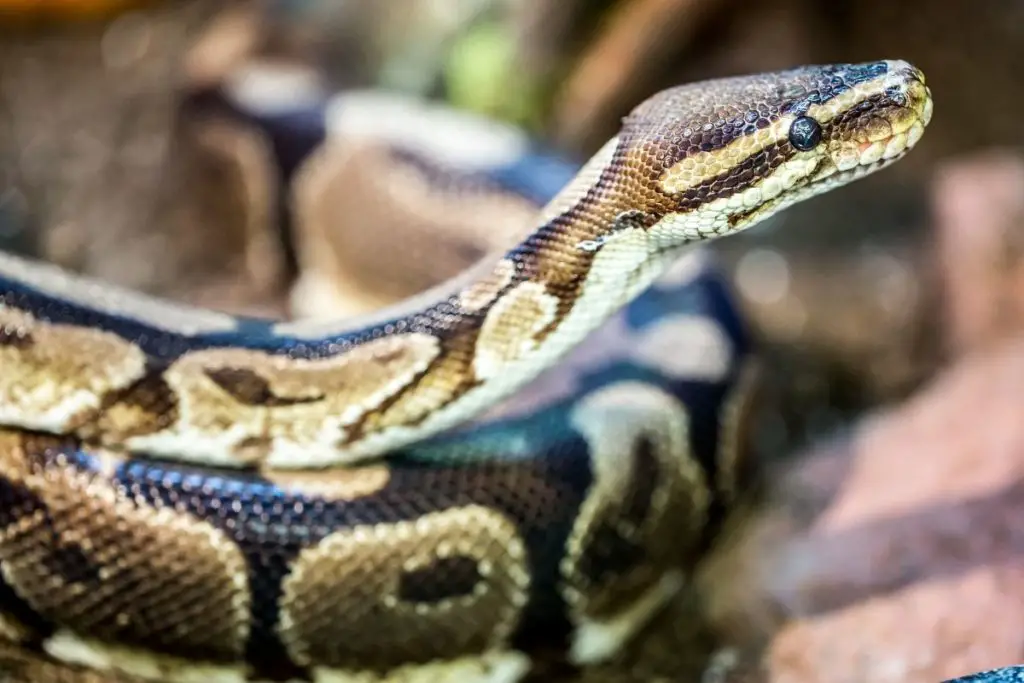
Lifespan: 15-30 years
Size: 6 feet.
Price: $70
The happy and laid-back nature of Ball Pythons makes them excellent snake pets. The slow metabolism rate contributes to their longevity as well. They’re great for kids since they don’t require much physical activity or high levels of interaction.
Because they are quite docile, they also make wonderful house snakes.
This is a docile snake that doesn’t mind being handled and showing affection. With the correct owner, who has built a trust foundation with the reptile, this species is quite gentle.
Because it has utilized a substitute self-defense mechanism, your ball python is less likely to bite you. When scared, it tends to curl up into a tiny ball as much as feasible, hence the name “ball python.”
It’ll wrap itself up into coils and tuck the head and neck in to keep the danger from reaching its most important areas.
This is the only way in which any snake defends itself. Others mostly coil up into an S-shape and expose their fangs, eager to bite when confronted.
By the way, if you are interested in getting a ball python, you should take some time to choose the right morph. You can start by learning about the very unique and amazing fire ball python morph here.
Sunbeam snake
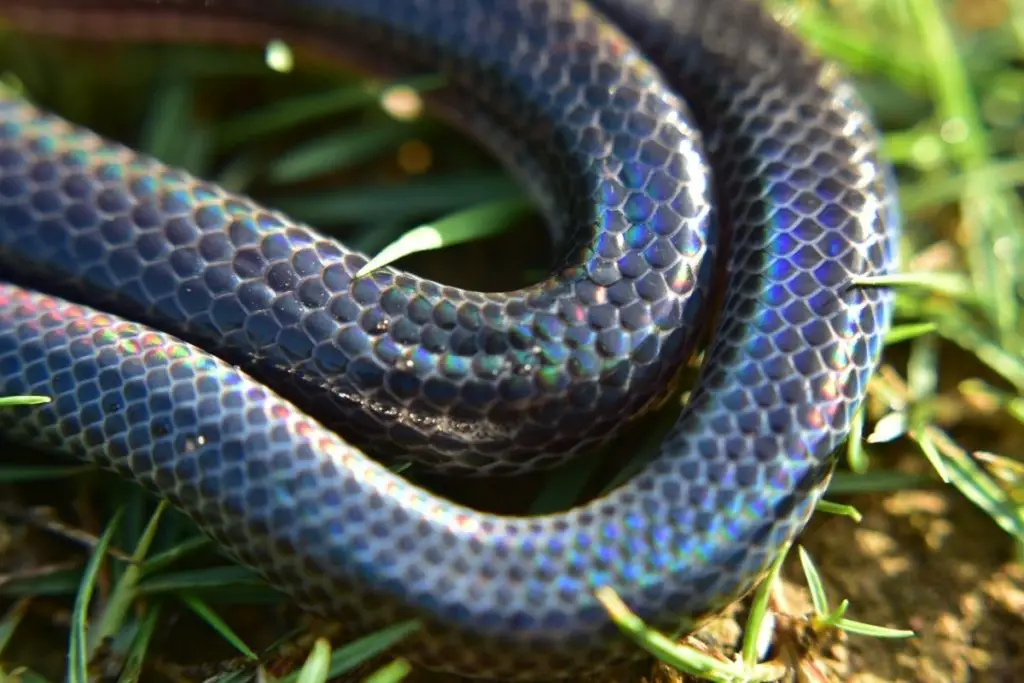
Lifespan: 10 to 15 years
Size: up to 3 feet
Price: $70 to $100
Sunbeams are without a doubt the most gorgeous snake ever! Their exceptional rainbow reflecting skin that draws attention to them is something you need to see. They are also quite approachable due on their tiny size.
Sunbeams are small, secretive snakes that prefer to hide in burrows. They’re skittish and enjoy burrowing, so they’re rarely seen. Sunbeams, on the other hand, are sociable and typically warm up to people after they’ve been handled.
They’re also non-venomous and non-hostile, so there’s nothing to be afraid of if you handle them correctly.
Rubber Boas

Lifespan: 40 to 50 years in the wild
Size: 21 to 26 inches
Price: $150
In therapy sessions, snakeophobics always utilize a Rubber Boa since it is the most effective technique to overcome their fear of snakes. This sheds light on this snake’s personality.
Rubber Boas are such friendly, kind, and interested creatures that they will regularly approach humans or even predators in the wild.
Unfortunately, while this action is really adorable, it means that these snakes are frequently killed by predators and people who mistake them for deadly snakes as a result of their innocent appearance.
They are also nonvenomous and while they do have fangs, they rarelt if ever use them.
Kenyan Sand boa
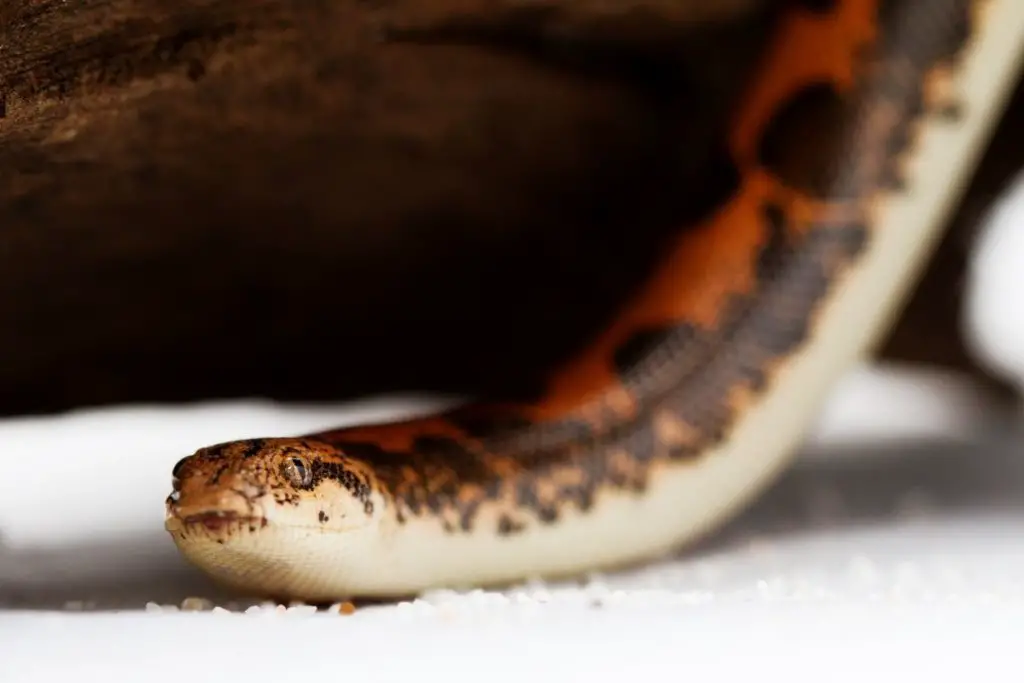
Lifespan: 15 years
Size: up to 2 feet long.
Price: $120
Another snake that’s exceptionally docile and a great pet for beginners is the Kenyan Sand Boa. This species has been around for quite some time now, but it still remains one of the best choices out there. They are also incredibly cute!
Kenyan sand boas have very interesting looks to them with their dark brown or black scales outlined with white. This makes it one of the most recognizable snakes out there.
They are also very calm and nice to look at, so they’re excellent for kids too!
This snake is only likely to nip at a person as a feeding response. Always keep it well-fed and happy, especially while traveling in its cage.
Kenyan Sand Boas are typically friendly toward people. Just remember to support the middle of its body for added support since it has a heavier midsection.
It’s also a good idea to approach your pet from a position where it can smell your scent and recognize you aren’t a danger.
California King Snake
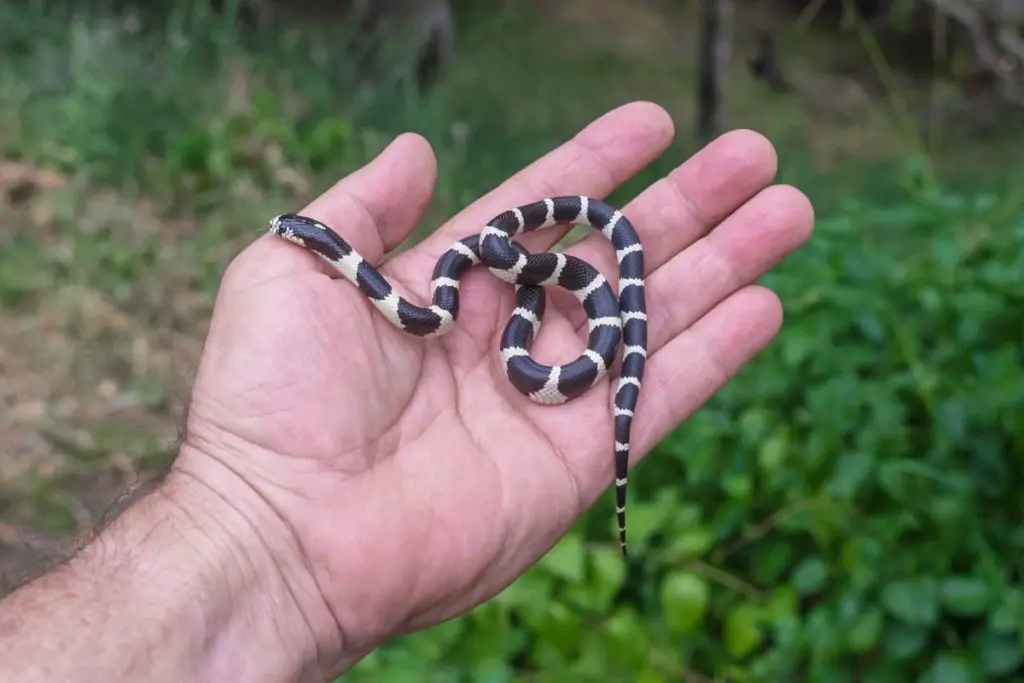
Lifespan: 20 years
Size: up to 40 inches
Price: varies
These reptiles, also known as “Cali Kings” by serpent enthusiasts, are typically docile, although they may become flighty, active, and skittish when young.
California Kingsnakes are also known for being escape artists. So, if you don’t want to run into your pet in your bedroom, you should consider purchasing clamps for your mesh lid.
Adult California Kingsnakes, on the other hand, are docile and non-violent unless provoked, so they are one of the snakes that are least likely to bite their owners.
Ringneck Snake

Lifespan: up to 6 years
Size: 10 to 15 inches
Price: $30
Ringneck Snakes are a very good snake for beginners because of their docile nature and calm temper. They’re also not too expensive either!
However, these snakes have certain behaviors that may become problematic to the owner if they aren’t aware of them ahead of time. Ring necks can be particularly mischievous when it comes to escaping their enclosures.
Many people mistake small snakes for babies because of their length, which is around 15 inches. They have a diameter no thicker than that of a pencil and can consume tiny worms and invertebrates.
Cape House Snake
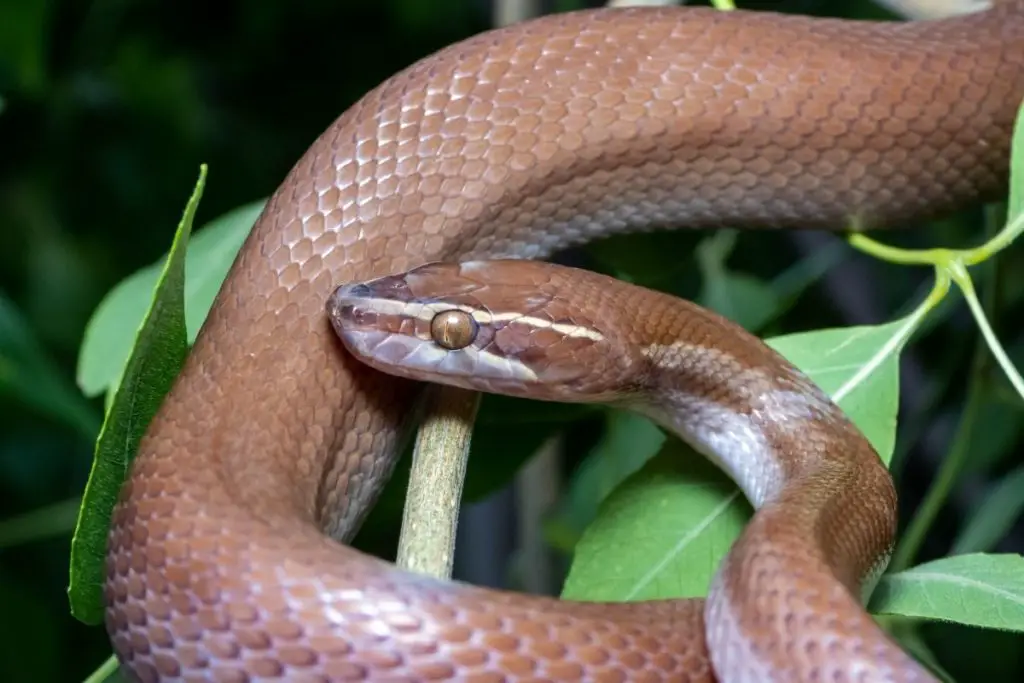
Lifespan: up to 8 years
Size: 2-4 feet
Price: $70 to $150
The Brown House is a snake species that can be found in Africa. They consume mice and have the same basic care and maintenance needs as other snakes.
Although the Brown House is not a particularly popular choice, it’s a wonderful beginning snake that costs between $60 and $150USD.
They are sweet, loving creatures that will thrive in your household and become part of your family.
They generally have excellent dispositions and can be easily trained after being introduced to their new home. Because they aren’t excessively large, if they bite, it should not be a dangerous bite.
African Egg-Eating Snake
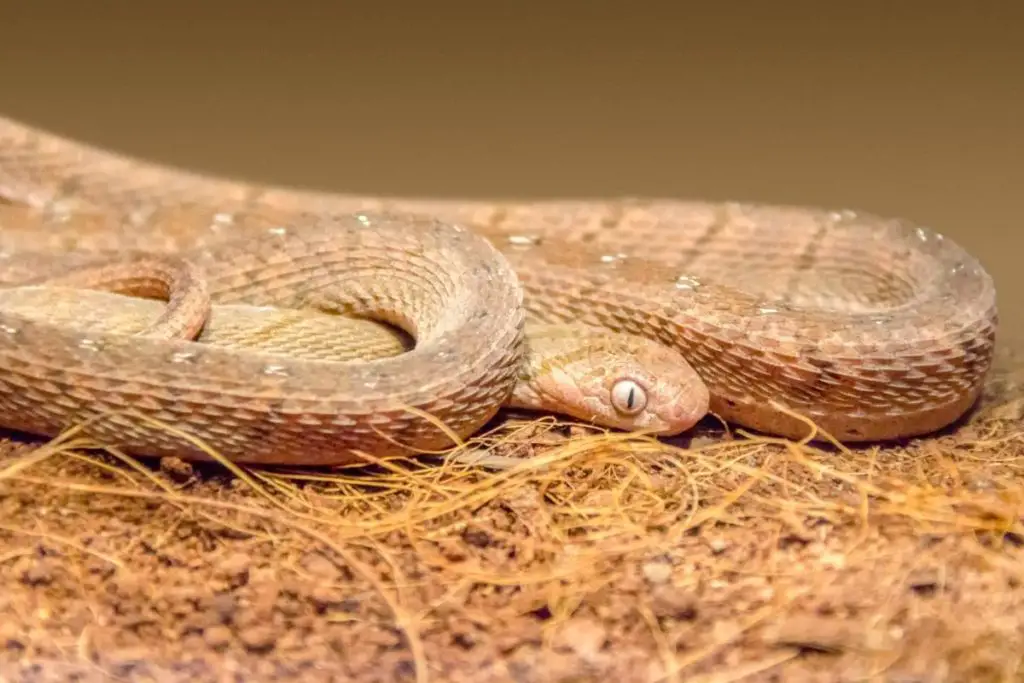
Lifespan: up to 15 years
Size: 2.5 feet
Price: $60 to $150
The African egg-eating snake eats only bird eggs, so their diet is the most difficult (and expensive) thing about them if you are considering them.
It’s one of the most difficult aspects of their care to feed this snake in captivity. Finch or quail eggs should be used since chicken eggs are too big. If you don’t want to offer rodents, this snake could be the one for you.
They come from dry regions, so they don’t require as much humidity as most species. Aside from this, they have a inactive defense strategy, using colors of more dangerous reptiles instead than attempting to bite.
They are unable to bite and cause injuries to a person.
They may live up to 15 years when properly cared for. They are easy to handle by a novice, and they are calm, docile, and obedient after being handled frequently. They can survive up to 15 years if properly managed.
Milk Snake

Lifespan: 15-20 years
Size: Up to four feet long
Price $30-$50
The Milk Snake, like the California King snake, is a distinct species of King Snake.
They’re found in the United States and Mexico, with black, white, and red body rings being most common.
They are sometimes found in forests or mountainous regions, and while they don’t inherently enjoy sunbathing, soaking up the heat from rocks and logs is fine with them. They have very little upkeep needs and can live up to 20 years if properly cared for.
This reptile is tiny, usually growing no larger than two feet in length during their first several years.
Milk Snakes are a docile species that seldom bite. For a novice herpetologist, they are undoubtedly manageable and usually cost $50 but you can pay up to $200 USD for a one from a quality breeder.
One of the snakes I was considering including in this list but end up deciding not to is the garter snake. Garter snakes are docile, friendly, and usually misunderstood, and you can learn if garter snakes bite here and tell me if you think they should be included in the list!
Why do Snakes Bite?
Now that we have looked at the snakes that don’t bite, it’s important to know why some snakes do. Snakes bite for a variety of reasons;
- To defend themselves or their territory
- When they are startled or feel threatened
- When they are being handled improperly
The best way to avoid getting bitten is to always be respectful of the snake and know how to handle them properly. If you have other pets, you should not allow them to interact with your pet snake at all because most other pets, especially dogs, don’t get along with snakes.
It’s recommended to separate your pets to different parts of the house if possible where they live completely independently of each other as if they are the only pets in the house, but if this is not possible, make sure to teach your pet that the snake’s room is off-limits.
How to Handle Snakes Properly
If you are new to snakes, it’s important to learn how to pick them up and hold them correctly so that you don’t scare or threaten them. Here are some tips:
- When picking up a snake, always use two hands and support their body weight.
- Gently grasp them behind the head and transport them in that position.
- If you are going to be handling your snake for an extended period of time, it’s a good idea to offer them a water bowl so they can drink.
You can learn more about how to handle your pet snake in my post on whether pet snakes like to be held here.
Safety tips for handling snakes (so you aren’t bitten)
Here are some safety tips for handling your snake to avoid getting bitten:
- Don’t pick up a snake that isn’t willing to be handled. Picking up a snake against its will will make it dislike you and possibly bite you.
- When picking up the snake, be quiet and confident and make sure the snake can see all of you.
- If the snake shakes, acts nervously, shakes, or tries to move away, stop and don’t keep trying to catch the snake.
- If you’re going to hold a constrictor, they should coil around your fingers, but if they coil too tightly, you should unwrap them from their tailend.
- Wash your hands thoroughly every time you handle prey, your snake will bite your fingers off if it smells like mice.
- Don’t handle the snake after it has eaten.
- Don’t handle the snake during the shedding process
- Never grab a snake from the tail
- Avoid sudden movements or loud noises around snakes
- Do not try to pick up a snake that is coiled up as they may feel threatened and bite
- Be aware of your surroundings, if there are other people or pets around who might be scared of the snake, it’s best to take the snake to a secluded area where it will not be scared or startled. Snakes are very sensitive animals and can sense your energy, so if you’re nervous around them they might feel threatened even without seeing you as well!
- When transporting snakes in containers, make sure that their container is secure enough that they won’t escape. Snakes can be very resourceful when it comes to escape and end up biting someone.
- Always have a first aid kit on hand in case of snakebite.
Okay, now let’s see what you should do in case the worst does happen and you end up getting bitten by the snake.
What to do if your pet snake bites you?
If your pet snake bites someone, the first thing you should do is treat yourself or the person your snake has bitten. If you’re sure the snake isn’t poisonous (because if it is, you’ll need to go to an emergency room for anti-venom treatment within minutes), clean the wound with warm water and antiseptic cleanser.
Use a clean cloth to wipe away the broken skin with lots of water for several minutes and apply pressure to bleeding wounds to help them clot.
The bite should be reported to your doctor as soon as possible. Even non-venomous snake bites can become infected with harmful bacteria or germs, therefore addressing them right away is critical.
Helpful Resources
What to do if your snake bites you
If you like this article, please share it!

